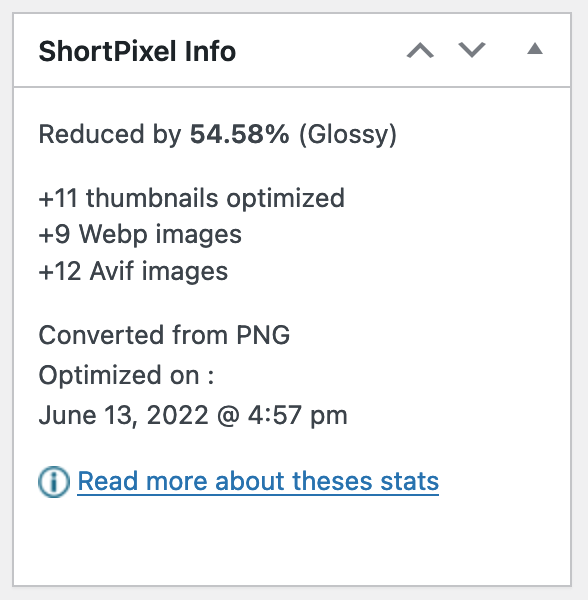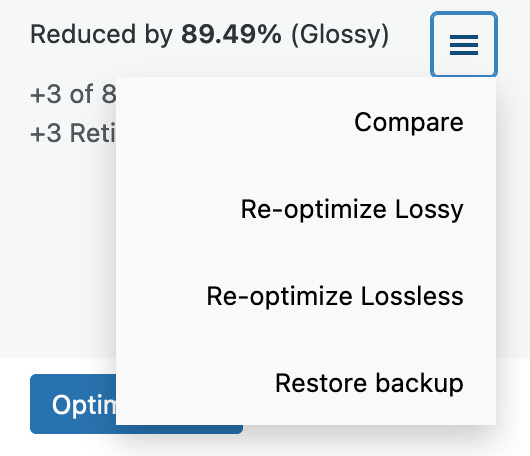The ShortPixel column in the Media Library and the ShortPixel widget in the image editing window display useful information about the optimization status of your images.
Let us look at some situations and explain what each piece of information means:

The above screenshot is from the Media Library (in List view) and it is pretty self-explanatory: In the first line of the box you can see the reduction percentage and the compression level used for each image. In this case the image was compressed using Glossy compression and reduced in size by 54.58%.
Moving further, we see:
- +11 thumbnails optimized: This count also includes the original, full image (in case WordPress created a scaled image and replaced the original one).
- +9 WebP images: In this case, there are only 9 WebP images (and not 12, as with AVIF) because 3 of the WebP images were likely bigger than the original format. This can happen with small thumbnails, where the WebP sometimes gets a bit larger and the plugin simply does not save the larger file, so it is not made available to site visitors.
- +12 AVIF images: These are basically the corresponding AVIF files for the 11 thumbnails and the main image.
The same image contains more information when you open it in the image editor window (by clicking on it in the Media Library):

As you can see, here we also have the date when the image was optimized, as well as the fact that the image was converted from PNG.
The following example contains some other information as well as a hamburger menu next to it, which means that the backup feature was enabled for this image when it was optimized:
![]()
This time we see the following additional information:
- +3 of 8 thumbnails optimized: This means that 5 of the thumbnails are excluded from the optimization and were not optimized.
- +3 Retina images optimized: This means that the 3 thumbnails that were optimized also had Retina versions and those were optimized as well.
- Item successfully optimized: This message is displayed right after the image has been optimized.
Now let us take a look at the hamburger menu and see what we can do:

- Compare the original image with the optimized one by clicking on “Compare”.
- Re-optimize the image with a different compression level, if we wish to do so.
- Restore the original images from the backup.